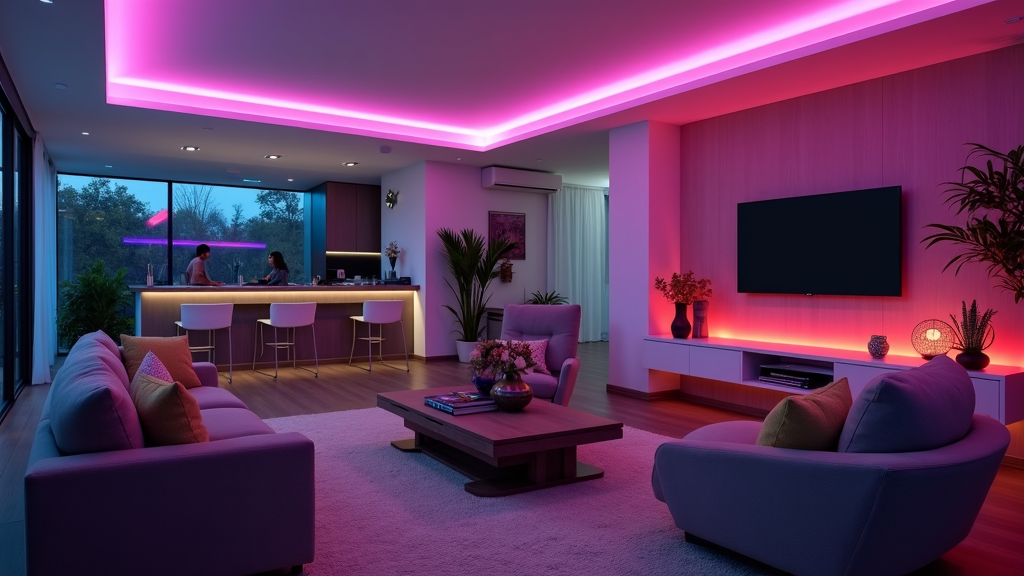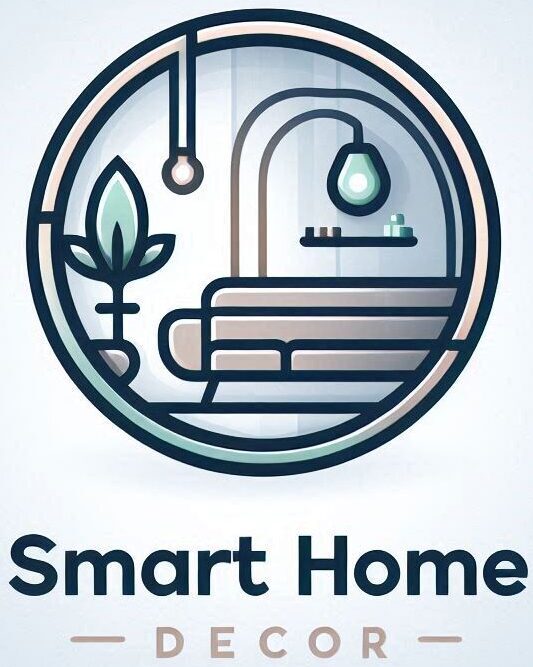Smart light strips make it easy to transform any space with color and creativity. Whether I’m aiming to splash a living room wall with mood lighting, outline a kitchen counter, or build an immersive gaming setup, the flexibility of these lights really opens up the possibilities. With so many options on the market, picking the best smart light strips for home decoration takes a bit of know-how. I’m breaking down what makes these LED light strips super useful, how they actually work, and which ones are worth checking out for different needs.

What Are Smart Light Strips?
Smart light strips are flexible LED strips that can be controlled through a smartphone app, smart home systems, or even voice assistants like Alexa or Google Assistant. I usually stick these strips under cabinets, behind TVs, along ceilings, or anywhere that could use some mood lighting or a pop of color.
The “smart” part comes from their ability to connect to Wi-Fi or Bluetooth. This means I can change up the colors, dim the brightness, set schedules, or sync them to music with just a few taps. Some even let me create custom scenes that fit certain vibes or activities, which is pretty handy if I like to match my lighting to movie nights, parties, or work-from-home focus time.
Why Use Smart Light Strips for Home Decoration?
Smart light strips pack a lot of value into one product. First off, they’re super easy to install. Most of the time, all it takes is peeling off the adhesive backing and sticking the strip where I want it. After that, everything from colors to power-on schedules gets handled from my phone. Here’s how I’ve seen them used at home, and why they’re such a hit:
- Ambiance Lighting: These strips add depth and warmth to rooms, making spaces feel more inviting in the evenings.
- Accent Features: They highlight shelves, artwork, and even stairs without the need for rewiring or bulky fixtures.
- Entertainment: Light strips that sync to sound turn a regular living room into a mini-theater or an energetic party space.
- Task Lighting: Under-cabinet or desk light strips give just enough glow for late-night reading or food prep without harsh overhead light.
These versatile strips can even make a kid’s room feel magical, or serve as practical nightlights in hallways and bathrooms. The sheer range of uses means I’m never bored with my décor options.
My Top Smart Light Strip Picks for Home Decoration
After testing and researching a bunch of options, I’ve found a few smart light strips that are especially good depending on what I want to decorate or control. Here are my top recommendations if you’re about to shop around.
1. Philips Hue Light strip Plus
Philips Hue is known for smart lighting, and their Light strip Plus stands out for reliability and integration. This strip connects smoothly to the larger Hue system, so if I already have Hue bulbs or a Hue Bridge, adding strips is seamless. Color accuracy is rich, the app is polished, and voice controls work without a hitch. Extension kits let me cover more area, and the lights handle bright whites just as well as vivid colors. If you want a future-proof setup, Hue is hard to beat.
2. Govee RGBIC LED Strip Lights
Govee has come up fast as a favorite brand for smart light strips, mostly because their prices are super reasonable and the features are solid. Their RGBIC strips let me control individual segments with different colors (unlike many basic RGB strips), so I can do gradients and effects that look really fun. Govee’s app is user-friendly, and voice control through Alexa or Google Assistant is available. They’ve also got music sync, which reacts to the beat using a built-in mic or phone audio. Great for gaming setups or party rooms!
3. LIFX Light strip Starter Kit
LIFX is a solid choice for folks who don’t want to hassle with hubs or bridges—each strip connects over Wi-Fi directly. The app has a bunch of customization options, including detailed color control and scheduling. LIFX strips also get impressively bright and have a wide color range. They support all the major smart assistants and even have built-in effects like candle flicker for ambient vibes.
4. Wyze Light Strip Pro
Wyze has made a name for affordable smart home gear, and their Light Strip Pro offers some advanced features at a budget price. The highlight here is the ability to segment colors along the strip, plus “sun match” mode, which adjusts the light’s tone throughout the day to mimic natural sunlight. The app makes it easy to set schedules, group strips, and use voice controls. If you want smart lighting at a nice price, Wyze is worth a look.
5. Nanoleaf Essentials Lightstrip
Nanoleaf is big in the smart light world and known for their unique shapes and bright colors. Their Essentials Lightstrip works well with Apple HomeKit, so if you’re in the Apple ecosystem, it fits right in. Good brightness, vibrant colors, and solid energy efficiency make it a cool addition to modern spaces.
What To Look For When Buying Smart Light Strips
There are a few things I always check before picking out a light strip for home decoration:
- Length: Measure twice before buying. Some strips are expandable, while others come in precut sizes.
- Brightness and Colors: Lumens tell you how bright a strip gets, and RGBIC models let you do more advanced effects than simple RGB strips.
- App Features: Some brands have way better smartphone apps than others, so look for easy scene setting, color wheels, and smooth scheduling tools.
- Smart Home Compatibility: If I’m already using Alexa, Google Assistant, or Apple HomeKit, I pick a strip that plays nice with my setup.
- Music Sync: If you want reactive lighting, check the music mode. Some strips use built-in mics, while others sync via software on your phone or PC.
- Cuttable and Extendable: This lets you better tailor your installation to your space, especially if your design includes corners or custom lengths.
Doing a bit of research helps avoid disappointment, especially when it comes to brightness, connectivity, and app reliability. Remember to check reviews and installation guides to get a clear picture of how each brand performs over time.
Types of Smart Light Strips
There’s a lot of variety out there, but most smart light strips fall into a few categories:
- Wi-Fi Light Strips: Connect directly to your Wi-Fi, usually allowing for remote control from anywhere using your phone.
- Bluetooth Light Strips: Work locally, with simpler setup but less flexibility if you want to control them away from home.
- Hub-Based Light Strips: Require a separate hub (like Philips Hue), which often translates into more advanced features and better reliability.
Most modern light strips also come as RGB, RGBW (adds true white), or RGBIC (controls colors in segments). The different types ensure that whether you want simple color changes or advanced lighting effects, there’s an option for you.
Lights That React to Music: Best Options
If syncing your lights to music is something you find exciting, a few brands do this really well. Govee is my go-to for music-reactive strips because their built-in mic does a great job of picking up sound even if the music isn’t playing through a connected device. LIFX and Philips Hue also offer music sync through their apps, though Hue sync works best when paired with a PC or the official Hue Sync box for TVs.
Nanoleaf’s Rhythm module lets its panel lights, plus the Essentials Lightstrip, respond to music, creating some really impressive effects for parties, dance sessions, or just chilling with your playlist. If you’re looking for a full-on party atmosphere, these brands deliver reliable and dynamic music lighting experiences. Just keep in mind that some setups might require extra gear, like a sync box or app extension, to enable full features.
Real-World Uses: Decorating with Smart Light Strips
I’ve seen smart light strips used in all sorts of creative ways. Here are some spots where they shine:
- Behind TVs and Monitors: Gives a cool backlighting effect, reduces eye strain, and can even sync with screen colors for gaming or movies.
- Under Cabinets: Useful for both ambiance and a bit of focused task lighting in kitchens or bathrooms.
- Along Ceilings or Stairs: Great for outlining architecture or creating a cozy evening vibe in any room.
- Bookshelves, Display Cases, or Bed Frames: Adds subtle highlights that make favorite items or rooms stand out.
I love experimenting with the placement and customizing the schedules depending on my mood or the occasion. The only real limit is imagination, and maybe the length of the strip. Sometimes, friends have even set up light strips behind headboards, under sofas, or inside closets for a hidden glow that adds a little bit of magic to everyday spaces. No matter the spot, these strips give a boost to style without major renovation work.
Frequently Asked Questions: Smart Light Strips
Which company strip light is best?
Philips Hue offers some of the most reliable and feature-rich smart light strips out there, especially for folks who want lots of integration with other smart devices or future expansion. For value, Govee and Wyze are also really strong picks.
What are the best light strips?
I’d recommend Philips Hue Lightstrip Plus for premium setups, Govee RGBIC LED strip lights for customization and music sync, LIFX Lightstrip kits for easy setup (no bridge needed), and Wyze Light Strip Pro for budget upgrades.
What are smart light strips?
These are flexible LED strips you can control from your phone or smart home platform. They let you pick colors, adjust brightness, set schedules, and even sync to music, all from an app or voice assistant.
What are the best lights that react to music?
Govee’s RGBIC strip lights are the strongest in this area. Philips Hue and Nanoleaf Essentials also perform really well, especially when paired with their music-enabled hubs or apps.
Final Thoughts
Smart light strips are one of my favorite ways to quickly update a space, whether for practical lighting or fun décor. With a huge range of prices and features, there’s an option out there for every home and every vibe. Thinking about placement, length, and app compatibility helps ensure happy results, and a living space that really feels like your own. Try experimenting with new spots and color scenes—the results might surprise you in the best way possible.
